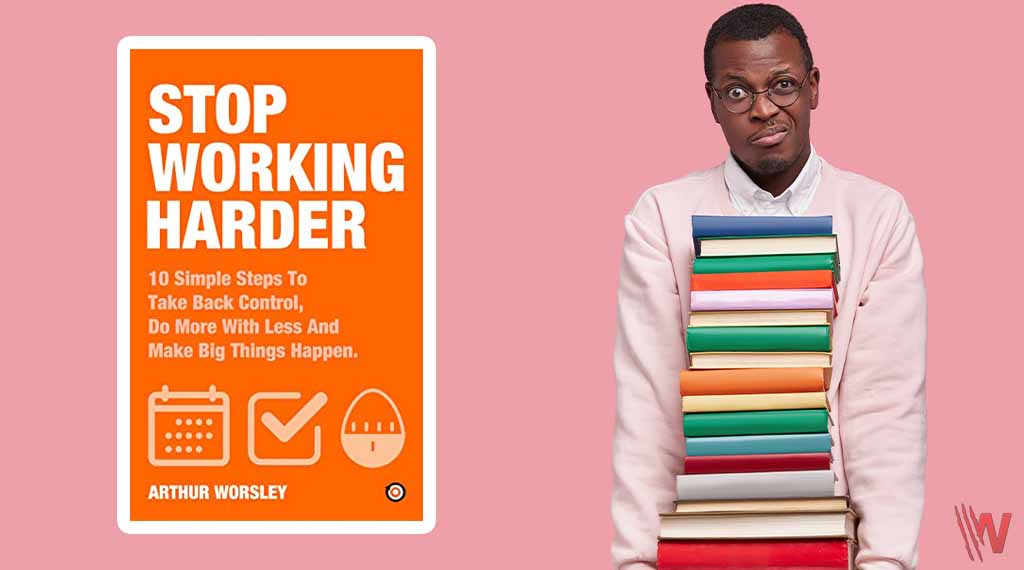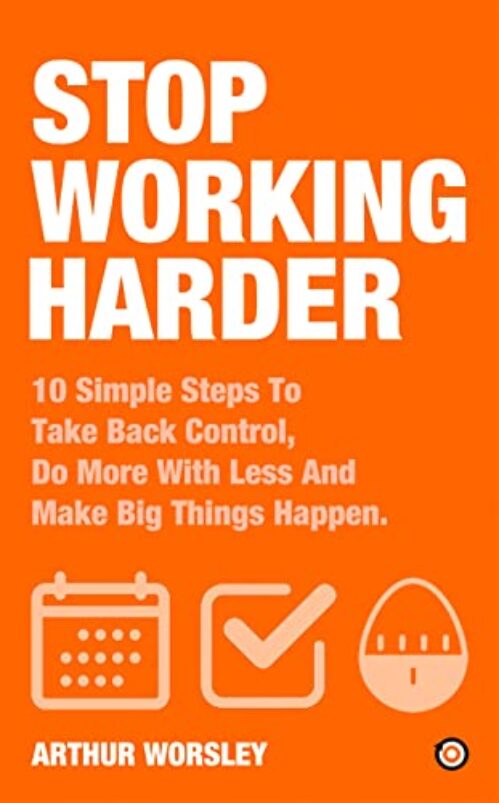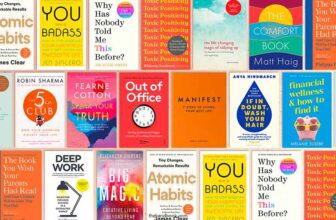In 2020, productivity author and coach Arthur Worsley published the ultimate guide designed to offer daily, essential advice to be productive called Stop Working Harder is The Art Of Living. The guide comprises ten easy steps that people can take to make bigger things happen with less energy excursion. The following is a review of this potentially life-changing piece of literature.
Stop Working Harder is The Art Of Living: Review
Stop Working Harder is The Art Of Living is the ultimate primer for productivity. It is a straightforward, down-to-earth manual for the fundamental basics of daily productivity. This is the kind of stuff we all wished we had learned in school.
Most pivotally, Stop Working Harder is The Art Of Living answers some pressing productivity questions including:
- How can distractions be reduced?
- How does one decide on the next thing to do?
- How should one set his/her priorities?
- What’s the most effective technique to handle emails?
- How does one best manage their calendar, chair a meeting, name the files, start organizing, and refrain from procrastination?
hese are just a few of the meta-problems that all new employees must navigate. Resolving them not only improves efficiency inside the workplace but also enhances productivity outside of it. Mastering these skills is the cornerstone of leading a balanced, fulfilling, and effective life.
Yet, despite their importance, these essential productivity techniques are rarely taught in schools, at home, or even within some of the most successfully run companies in the world. Many professionals are left to figure out these strategies on their own, much like those seeking practical methods to simplify productivity from Eat That Frog.

This results in emotional overload, discomfort, and anxiety that is off the charts, all culminating in utter burnout. Countless hours are wasted every day, when they could be spent on taking back control of people’s time, to be spent on more pressing work, time with loved ones, our favorite hobbies, relaxing, and decompressing. It simply doesn’t make any sense.
Worsley wrote Stop Working Harder is The Art Of Living because he wished that someone would have imparted the skills and wisdom in the form of a training manual for greater productivity on his first day of any new job. We hope that the invaluable information inside the work’s pages and in this summary helps you as much as it did the author and us, leading you to a happier, more fulfilling life.
Stop Working Harder
A Summary Of Stop Working Harder is The Art Of Living
There are two primary purposes for reading a book summary. One would want to read it either before or after reading the book. Reading it before, primes your brain and helps you decide if the text is worth your time, and reading afterward allows you to recap the main points of the text.
If you are here to read the summary before reading the book, consider ordering a copy that can be delivered digitally in expert detail, with many screenshots, links to essential resources, and pro tips, on top of a whole heap of bonuses.
If you have read the work and are reading this summary as a follow-up, we salute you for taking action and are here to provide a good recap for you. We hope that by now you are well on your way to achieving your best self, and remember to get to 100 you have to start at 1.
Step 1: Eliminate Distractions
The first portion of productivity is to eliminate as many distractions as possible. It is truly the only way to put your focus on the things you need to get done. Here are the 7 paramount steps to purging all distractions from your surrounding.
- Collect all of your devices
- Compile a “checklist”
- Turn all notifications off by picking up every device individually, opening the notification settings, toggling the notification of every app to off, adding the important ones to the checklist, then repeating for every device you have.
- Control your browsing by installing ad blockers. Go into your browser settings and navigate to notifications, then disable all of them, along with autoplay. Add the important ones you will want to get back to onto your checklist.
- Organize the checklist by looking through it and deleting all of the entries that you can, then organize and prioritize the rest.
- Enable stealth mode for all personal details
- Make it so it is incredibly hard to disturb you. You can do this by blocking off times on your schedule to avoid being booked into meetings, working somewhere where it is hard to get a hold of you, and anyone intent on finding you, make sure it takes them time to get an audience with you.
Step 2: Disengage Emails
There is a very high satisfaction level when you see your inbox at 0. Not only will this reduce your stress, but it will also alleviate the amount of time that you spend going through emails every week. Here are the 8 steps to do so:
- After adding emails to your checklist, shut off the supply of them by disabling notifications.
- Have a system to quickly find the messages you need.
- Set up #Action and #Waiting folders
- Get your unread inbox down to zero, review any read messages left to see if you really need them, then take any necessary action off of those messages. This achievement of a stale email state is done by starting at the top of your messages in the inbox, clarifying what is necessary, engaging in a micro manner, organizing the email, and moving on to the next one.
- Set newsletters to auto archive, have messages you are cc’ed on go to a secondary inbox and have automated “out of office” responses for anything else that comes in.
- Review all that remains
- Only bother engaging with the right email and do so in the right manner.
- Undergo a toolkit upgrade. That means setting up canned text responses, shortcuts to achieve through your keyboard keys, and snippets, merging your mail pieces, and setting up mailing lists to include maximum receivers on minimum messages.
Step 3: Dominate Folders & Files
There are 4 steps to decluttering and lightening your filing system:
- Centralize your storage by signing up or upgrading your Dropbox, having an intuitive and simplified structure to your folders, putting all necessary documents into your Inbox folder, and transforming your inbox into your new filing system.
- Simplify folders so you always know what to find and where.
- Clearly mark and title your files.
- Acquire power tools that will change the way you operate in your new productive file and foldering environment.
Step 4: Become A Master Of Meetings
The truth is some meetings have no tangible value, but how does one eliminate those from existence while mastering those that are truly necessary? Here are the 5 rules of thumb essential to achieve this purpose:
- When a meeting appears on your schedule, question what it is intended to accomplish, whether it is necessary to have a meeting, which participants’ presence is pertinent, and how to properly decline the invitation to one.
- When a meeting must happen, choose a quiet location for it. Brevity is key; just address what needs to be done and assure that the technology used is simple and readily available. Remind and reconfirm ahead of time to assure all participants are prompt. Start on time, ban the use of devices, and if there is a lull on your part, bring back up work to stay caught up.
- The biggest killer of meetings is side chatter. Make sure meetings stay on topic. This requires preparation ahead of time, with an agenda going in that is confirmed. A whiteboard or presentation keeps things moving, and forward progress is essential. Make sure someone in the meeting is keeping time and if time is running short, table any new items to be addressed later to stay in the meeting’s confines.
- Redundancy is another enemy of productivity. Make sure everyone gets a chance to say their piece if it’s vital, but arrange a speaking order. Have someone keep notes, jotting down ideas and issues for visual representation.
- To make sure everyone got the most out of the meeting and can progress efficiently, follow up within the next 24 hours with “lessons learned,” decisions that came out of the meeting, any outstanding items tabled for later meetings, follow-up actions, responsibilities, and timelines of when the next steps need to be accomplished by.
Step 5: Get Through Tasks
The idea of an efficient system is to keep it lightweight and practical, but get a lot of things done. To do so, break the task of tackling part of the princess into 5 steps.
- Set up a system to manage deadlines with a calendar, keep track of tasks and projects with a task manager and a project list, respectively, and finally, create a folder for the related plans.
- Make sure all of your ideas are stockpiled in your task manager tool and list of upcoming actions is clearly outlined.
- Question what each upcoming step is, which could permit you to eliminate some.
- Organize everything so that every idea has a particular place.
- Review everything, and run through steps two through four again, asking yourself how far you have advanced at this point.
Step 6: Maximize Daily Productivity
Set up every day to be successful in the following 4 ways:
- Don’t wait for tomorrow to plan. Make sure your priorities are clearly denoted and that you set a scheduled plan for the following day. This will allow you to put together an ideal schedule for subsequent workdays.
- Get a lot done in the morning. One of the best ways is to start progress the night before, handling faster easier tasks, and allowing the morning to go more smoothly. You will have a clear mind when work left is more simple.
- If something needs to be done first, don’t decide to wait on it. Just get it done first.
- Track how much time it takes you to perform your tasks.
Step 7: Dominate Weekly Accomplishments
The 4 ways to start on top of your ambitious goals every week include:
- Put together weekly goals.
- Plan what you will accomplish during the week.
- Hold yourself accountable. This can be done by finding people whose opinions you value and regard highly, then informing them what you are planning to get done during the week at the start, and then how much of those things you got at the end of the week. Repeat this every week thereafter.
- Adopt ABC days: A – days of doing things, B – days of planning things, C – recovery/catch-up days
Step 8: Enhance Your Goals
The chapter that talks about the steps to enhance your goals contains many before and after, real-world examples, splitting the strategy of bolstering goals into 5 aims of making them:
- Simplified
- Measurable
- Actionable
- Pragmatic
- Time-feasible
Step 9: Conquer Procrastination
Procrastination is the hardest foe to conquer but in reality, you only need three steps to beat it:
- Give yourself allotted times to procrastinate. Open a file or grab a paper and jot down behaviors you know you engage in during procrastination. When you detect new procrastination behaviors, add them to the list.
- The way to overcome any shortcoming is to understand why it’s happening. Therefore, you must understand why you tend to procrastinate. Generally, the four reasons for procrastination are the lack of clarity, courage, motive, or energy.
- Finally, you need to resolve to defeat procrastination. You do this by being courageous, clearheaded, motivated, and full of restored energy.
Step 10: Reflect, Reassess, And Start Again
Finally, it is important to understand that this process isn’t a line, it’s a loop, one in which every iteration must be better than the last. Therefore, you should always ask yourself what went well, what was learned, and how can things be done more efficiently, then keep to those lessons on the next go-around.
Stop Working Harder Conclusion:
Stop Working Harder” by Arthur Worsley is a book that challenges the conventional wisdom that working harder is the only way to achieve success. Instead, the author presents a framework for working smarter by focusing on high-leverage activities, outsourcing low-value tasks, and optimizing one’s environment for productivity.
The key takeaways from the book include the importance of setting clear goals, prioritizing tasks based on their impact, delegating tasks effectively, developing effective systems and routines, and creating an environment that supports focus and concentration. By implementing these strategies, anyone can achieve more with less effort and achieve their goals with greater efficiency and effectiveness.
Frequently asked questions:
how to stop being so hard on yourself at work?
One way to stop being hard on yourself at work is to practice self-compassion. Treat yourself with kindness and understanding, and recognize that everyone makes mistakes. Focus on your accomplishments rather than your failures and try to learn from your mistakes. You can also set realistic goals and give yourself permission to take breaks when needed.
how to achieve sustainable success?
One way to achieve sustainable success is to set clear goals and establish a plan of action to achieve them. This includes breaking down larger goals into smaller, achievable tasks and regularly tracking progress. Additionally, developing healthy habits and prioritizing self-care can help maintain the energy and focus needed for sustained success.








